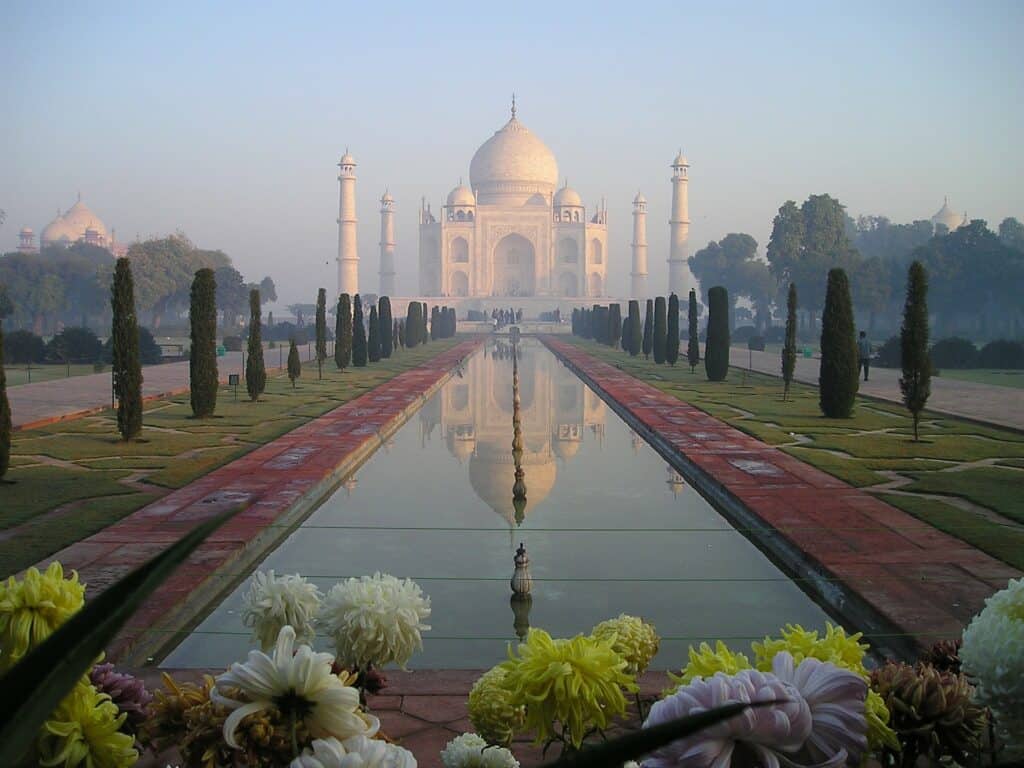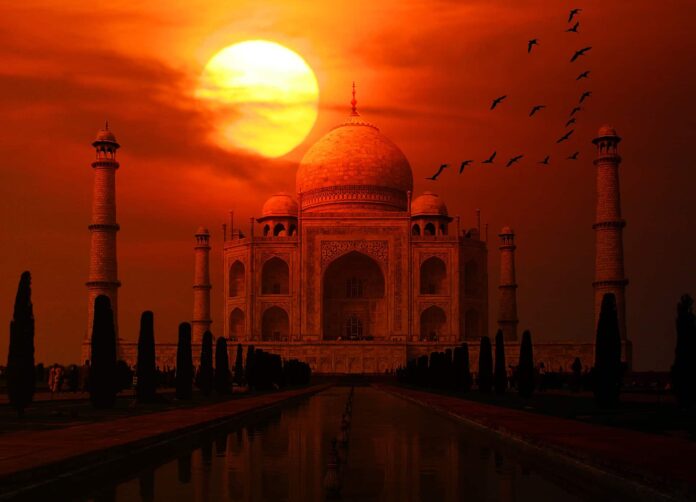Taj Mahal India
The Taj Mahal is one of the most iconic and beautiful structures ever built. It stands on the picturesque bank of the River Yamuna as a symbol of the rich and storied history of India. One of the most recognizable buildings in the world, it has graced countless artworks and exerted an inestimable cultural impact.

It was originally commissioned in 1631 by Shah Jahan as a temple or mausoleum in honor of his deceased wife, Mumtaz Mahal; it has since become an emblem of love which has endured for centuries and remains one of the world’s most popular tourist destinations and sights of cultural interest. Shah Jahan took Mumtaz Mahal as his bride in 1612, and when he ascended to the role of fifth Mughal emperor, he named her as his Empress Consort in January of 1628. She bore him fourteen children, but it was while giving birth to the fourteenth in June 1631 that she died from a hemorrhage.
Shah Jahan immediately commenced designing the fabulous structure that would eventually become the Taj Mahal. The central mausoleum was finished in 1648, but the grounds and outbuildings took an additional five years, meaning this masterpiece of architecture took a grand total of twenty-two years from inception to completion. However, the story of Shah Jahan took yet another tragic turn after the Taj Mahal’s completion. He went to war with his sons and was eventually imprisoned across the river from the mighty structure- he could see it from his window but was unable to visit it again until he himself was interred there beside his beloved Mumtaz.

The building itself is a combination of Mughal and Indo-Islamic architectural traditions. In today’s money, the cost for the construction would be roughly US $1 billion. Its exquisite symmetry is designed to denote the serenity and harmony of paradise, while its marble-white frontage creates a heavenly aspect. It took a grant total of 22,000 laborers, stonecutters, and artisans to complete the Taj Mahal and over 1,000 elephants to transport the materials. For many years a shocking rumor persisted that to prevent the majesty of the Taj Mahal from being replicated, Shah Jahan ordered for the hands of the artisans to be cut off to prevent them from ever producing a masterpiece as spectacular as this. However, this rumor is now considered to be false.
Another legend states that Shah Jahan had originally intended to have a duplicate Taj Mahal constructed for himself on the other side of the river, this time in black. However, whether or not this legend is based in truth, the fact remains that the Taj Mahal remains utterly unique, and no such second structure was ever built.

The most recognizable feature of the Taj Mahal is the domed mausoleum itself, which stands at 115 feet in height and houses the tombs of both Mumtaz and Shah Jahan. But in actuality, the various gardens and outbuildings cover 42 acres and include a working mosque. It is also bedecked with both precious and semiprecious jewels; however, a large number of these were removed by British soldiers during the Sepoy Rebellion of 1857. Sadly, the building itself requires considerable maintenance and conservation work, as the extensive air pollution in Agra has begun turning the white marble walls to a sickly yellow.

This has been counteracted using a traditional “mud-pack” cleaning method. The structure has also begun to crack due to insufficient groundwater. However, this does not detract from the awe-inspiring appearance and shimmering splendor of the locale. In fact, the Taj Mahal itself appears to change color depending on the shade of sunlight shining down on it, meaning that as the evening draws in, its color darkens and deepens. Similarly, the minarets are carefully designed to evoke an interesting optical illusion: they were constructed with a slight lean, which tricks the eye of the beholder into perceiving the mausoleum itself as considerably larger when viewed from a distance.
The legacy of Shah Jahan’s love for Mumtaz endures to this day. Most recently, the Taj Mahal was selected as one of the “New Seven Wonders of the World,” receiving more than 100 million votes and continues to attract upwards of seven million visitors a year. Its majesty has dazzled travelers for centuries and will no doubt do so for centuries more
